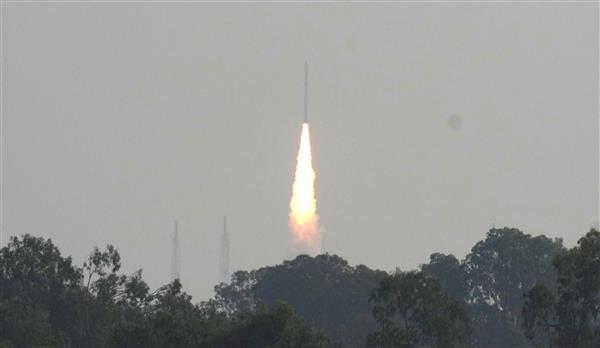ISRO’s SSLV D2 rocket injects 3 satellites into orbit, months after maiden mission failed
PTI
Sriharikota, February 9
ISRO on Friday tasted maiden success in the small satellite launch vehicle segment, with its SSLV D2 rocket injecting three satellites into an intended circular orbit, months after the maiden mission failed to bring in the desired results.
The satellites included ISRO’s earth observation satellite EOS-07.
ISRO’s first mission in 2023 and SSLV’s sequel saw a strange coincidence–it was launched at 9.18am, the same time its predecessor lifted off from the Satish Dhawan Space Centre here on August 7, 2022 but could not deliver due to orbit anomaly and flight path deviation.
With the earlier SSLV not living up to the expectations, ‘corrective measures’ were put in its successor.
A visibly relieved Chairman of the Indian Space Research Oragnisation (ISRO), S Somanath, said SSLV in its second flight put the three satellites in the intended orbit with precision.
“Congratulations to the space community of India…we have a new launch vehicle, the small satellite SSLV. In its second attempt, SSLV D2 has placed the satellites in the intended orbit precisely. Congrats to all three satellite teams,” he said from the Mission Control Centre (MCC) soon after the successful launch that brought all-round smiles.
All the problems related to the previous SSLV launch had been identified, corrective action taken and implemented in good time, Somanath added.
Mission Director S Vinod said the ISRO team made a “comeback” in short time soon after the August 7, 2022 failure.
ISRO now has a “new launch vehicle” on offer for the launch vehicle community, he added.
Earlier, the 34-metre tall SSLV soared majestically into clear skies at 9.18am, after a six-and-a-half-hour countdown, carrying with it the EOS-07, besides Janus-1 and AzaadiSAT-2 satellites. The rocket placed the satellites into the intended 450-km circular orbit after a 15-odd minute flight.
EOS-07 is a 156.3kg satellite which has been designed, developed and realised by ISRO. New experiments include mm-Wave Humidity Sounder and Spectrum Monitoring Payload.
Janus-1, a 10.2kg satellite, built by Antaris, US, is a technology demonstrator, smart satellite mission, ISRO said.
Azaadi SAT-2, weighing about 8.2kg is a combined effort of about 750 girl students across India guided by Space Kidz India, Chennai. It aims to demonstrate amateur radio communication capabilities, measure radiation, among others, the space agency added.
According to ISRO, SSLV is capable of launching mini, micro or nano satellites in the 10-500 kg segment into the 500km planar orbit. It caters to the launch of satellites to Low Earth Orbits on “launch-on-demand” basis. It provides low-cost access to Space, offers low turn-around time and flexibility in accommodating multiple satellites, and demands minimal launch infrastructure, ISRO added.
It is configured with three solid propulsion stages and a velocity terminal module.
For all the latest Technology News Click Here
For the latest news and updates, follow us on Google News.

